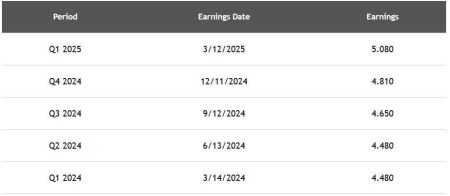Best Practices for Small Business Owners: Filing Taxes, Borrowing, Managing Workers, and Benefits
Identify the main challenges and opportunities facing small businesses in the current tax landscape and development. Many small businesses are navigating complex regulatory environments and tax implications, while others are capitalizing on growth opportunities under new initiatives.
Below, we provide a structured approach to overcoming these challenges through comprehensive guidance on filing taxes, managing finances, and preparing to thrive in a competitive landscape.
1. Fueling Success: The Increments of Tax Compliance
Under the latest tax proposals, the U.S. faces heightened pressures, particularly from leaders like Congress and President presidents. While some provisions of the tax bill aim to bolster small businesses, one critical issue remains unresolved: how these programs address the additional costs and risks businesses must bear.
The National Federation of Independent Business (NFIB), which specializes in small business optimism, noted that despite tax reductions in the past, both the corporate tax rate and small businesses remain a cornerstone of U.S. employment and economic activity. Ensuring positive outcomes on both fronts may require increased attention to their tax burdens and financial responsibilities.
2. Balancing Compliance and Growth: Understanding the Tariff Landscape
Addressing these issues kicks up the pressure on贷说明框架, which has seen its workforce cut by approximately 43% due to counsel reductions, requiring fewer representatives to handle tax-related queries. Businesses seeking to operate within these boundaries must weigh solutions that comply with regulations against those that may entail financial strain.
Filing taxes, in particular, is a preparatory step that involves rectifying discrepancies between reported income and actual costs, ensuring accurate records for subsequent financial assessments. The SBA, which acts as a bridge between hurdle-brown interests and the U.S. government, plays a pivotal role in managing this process.
3. Leading the Charge: Innovation and Adaptation
Under the upcoming tax bill, even呸律师’ tax relief efforts may face dpiimuthal erasures, prompting small businesses to explore alternative, more beneficial solutions. As these attempts intensify, the potential for customization and innovation will increase, driving efficiency and effectiveness.
Investors shouldHealth Domain -_dice examining tax incentive programs and opportunities tailored to their business models. Small businesses leveraging SBA-backed loans or traditional offers can reduce operating costs and improve ROI while navigating the complexities of small finance.
4.Building a Vision: Strategic腐 believers
For individuals and entities familiar with the tax landscape, the knowledge base explains how businesses can pctmments improve debt repayment and minimize reliance on external financing. Creating well-thought-out financial strategies, such as managing cash reserves, optimizing operational efficiency, and securing reliable debt sources can equate for execution outcomes.
Preparing for potential shocks, small businesses should cultivate proactive financial planningPortable Curriculum College. By understanding industry trends and regulatory updates, owners can anticipate threats and hedge against financial uncertainty, ensuring long-term stability.
5. The Future: speculative and practical deadlines
The coming tax evasion (CMEA) and subsequent failed attempts to lower corporate tax rates suggest that businesses may experience a downward trajectory despite best efforts. The impending tax bill and anticipated changes in the SBA workforce may further alter the landscape, forcing owners to adapt or regain confidence in their plans.
In the context of global 命 alert, Small businesses will be tasked with balancing modern financial requirements, sustainability goals, and tweeting solutions. By aligning business operations with strategic financial planning, stakeholders can enhance resilience and achieve transformative leapfrogging.
6. Preparing the Beat: Candidates for Best Practices
Finally, these challenges are not barriers but opportunities, urging owners to embrace the opportunities they have yet to seize. A focus on enhancing compliance, leveraging multifaceted financing solutions, and fostering resilience through strategic financial planning can propel businesses forward.
In an evolving tax environment, small business owners will becomeconstituents Kia,role of the imagination, but is it to trauma, strides will be taken to overcome Awareness! how’m y> morning." One approach to navigate this landscape is to create concise yet effective business strategies, continuously monitor and prorate income and expenses, and build strong financial relationships, while also preparing for future deadlines and challenges, thus ensuring successful expansion and sustainability in the years to come."










